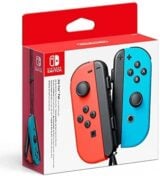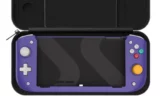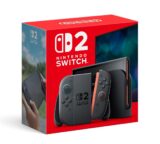Review: Disney Illusion Island is a charming but basic family-friendly Metroidvania
The Switch exclusive is beautifully designed but left us wanting a little more
- Writer and director
- AJ Grand-Scrutton
- Key Credits
- Grant Allen (Lead designer), David Housden (Composer)

You don’t have to search too hard to find high quality Metroidvania games these days, but finding one that’s child-friendly is a much harder task.
Disney Illusion Island is an attempt to fill that niche, offering a more colourful take on the genre and including Mickey Mouse and his chums as playable characters.
The game sees Mickey, Minnie, Donald and Goofy travelling to the island of Monoth, where they meet a little creature called Toku.
Toku is the leader of the Hokuns, and they want Mickey and pals to find the three mystical Tomes of Knowledge so they can be put on a giant magical bookshelf to protect the island.
Each Tome can be found in a different biome, and is being guarded by a different boss, so it’s up to the player to traverse the game’s sizeable map, defeat the bosses and recover each Tome.
This plot is told via a relatively lengthy cutscene with dialogue that feels a bit hit-and-miss. While it’s clearly aiming to be clever and self-referential, a number of the jokes fall flat, which ultimately set the tone for the rest of the game – at times you’ll be chuckling at funny lines, while other lines feel like they’re trying too hard and don’t land as a result.
Gameplay is mostly as you would expect from a Metroidvania title – your chosen character starts with a very basic set of abilities and over time they’ll earn new ones from Mazzy, an inventor who – in one of the game’s funnier recurring jokes – gets noticeably more exhausted every time they hand out new skills.
These abilities are generally quite straightforward – there’s a double jump, a wall jump, a ground pound and the ability to swing on grapple hooks, glide and swim – and they’re spaced together fairly well to ensure that the next one appears just as you’ve exhausted the possibilities of the previous one.
It’s a shame, however, that each of the four characters is identical in terms of how they play. Each uses a different item for their skills – Mickey uses a little pedal helicopter for his glide move, for example, while a frustrated Donald is instead given two big feathers to flap together – but they all behave exactly the same. While this does a good job of accentuating each of their personalities, it does reduce replay factor since the game plays identically regardless of who you choose.
Metroidvanias can live and die by their maps and while this one can be a tad cluttered, it does a really good job of indicating which areas need a locked power to be accessed (by marking them with a question mark when you reach them), then later changing to the icon of that power once you unlock it, making it easy to see which sections of the map you’ve gained new access to.
You can’t mark anything on the map manually, but this generally isn’t needed too much because you’re usually only really juggling one or two tasks and most collectibles – the only real side-quest of note – are marked on the map as you walk past them too.
Given that it will clearly appeal to younger players, there are a few optional assists designed to help them with the game. For very young players who don’t understand that the longer you hold the jump button the higher you jump – something this writer is currently struggling to get his 5-year-old daughter to understand in Mario games – it’s possible to turn off variable jump height so even the slightest tap results in the highest possible jump.
There’s also a double jump assist option, as well as the option to turn on permanent wall cling – without it the player slowly slides down the wall during a wall jump, but with it turned on they’ll stick to it without sliding (unless the player manually presses Down to start the slide).
The focus on younger players also means that Illusion Island isn’t a violent game, at least in terms of the player’s abilities. Obviously enemies can still harm you, but there are no player attacks in the game, meaning enemies have to be avoided instead of harmed. The only exception is boss fights, but even then attacks are indirect (flipping switches to trigger an attack, for example) and enemies are temporarily turned to stone when beaten, instead of killed.
“The focus on younger players also means that Illusion Island isn’t a violent game, at least in terms of the player’s abilities. Obviously enemies can still harm you, but there are no player attacks in the game, meaning enemies have to be avoided instead of harmed.”
Because of this the game also isn’t massively difficult – the boss fights aside – and there are no difficulty settings, beyond the option to start the game with one, two or three life hearts (this can be expanded as the game goes on). There’s also the option to choose a single steel heart, which essentially makes the player invincible.
One of the game’s obvious highlights is the way it looks and sounds. The art style is unique for a Disney game, backgrounds are beautifully detailed, and while the character designs clearly takes inspiration from the more modern Mickey Mouse cartoons (all of which, incidentally are on Disney+ and are genuinely hilarious), it’s also distinct enough that it’s obvious it was handled by a different team.
The music – by Thomas Was Alone composer David Housden – is similarly impressive, with a full orchestral score accompanying the action. We’re not exaggerating when we say that some of it feels like it would fit perfectly as the background music that plays in some areas of Disneyland (like Main Street USA or Fantasyland), and that’s pretty much the best possible compliment you can give to music in a Disney game. The boss music is also similarly dramatic and epic, particularly near the end of the game.
Speaking of the end, this is definitely the weakest point of the game. Naturally we’ll avoid spoilers but the plot completely falls apart, and given that this 40-year-old writer struggled to keep up with it we’ve got no idea how a much younger target audience is expected to understand the numerous twists, turns and character motivation monologues tossed around in the last hour or so.
The final boss battles are also the point where it might start to get too difficult for younger players, though obviously there’s always the option to quit to the main menu and reload the save with more life hearts (or the steel heart) to make it more manageable.
Once the game reaches its rather underwhelming ending there are still collectibles to pick up to clear the game 100%. There are 91 Tokuns (collectible cards which give info on each character), 69 pieces of Mickey Memorabilia (which are just small icons relating to past and present Mickey cartoons) and 2340 Glimts (small blue orbs which increase your number of hearts as you hit certain milestones).
While it’s obviously aimed at younger players, veterans of the genre who are still Disney fans should bear in mind that anyone with reasonable skill will make short work of this game. When we beat it our save file read 5 hours and 50 minutes with 75% progress, and the way the map highlights all the other collectibles means it took another hour or two to clean everything else up.
It’s clear that the optimal way to play Illusion Island is via its 2-4 player co-op mode, either as a group of young players, or a family situation with parents and children. This adds extra moves like a hug (which gives players an extra health heart) and a rope drop – a potential nod to Mega Drive game World of Illusion – which lets you pull teammates up to higher platforms.
Ultimately, though, however you play, the general result is the same – a fairly straightforward Metroidvania which is elevated by a wonderful art style, fantastic music and a more family-friendly approach, but is also let down by its short length, a lack of variety in its characters, a lack of new gameplay ideas and dialogue that seesaws in quality throughout.
Disney Illusion Island looks and sounds incredible and doesn't do much wrong in terms of gameplay. It doesn't really do much to advance the Metroidvania genre, though, and while it's clearly designed to appeal to younger players the convoluted ending and hit-and-miss jokes mean we ended simply enjoying it, rather than loving it.
- Looks and sounds beautiful
- Lots of assists for younger players
- The map does a great job of marking what's left
- Dialogue falls flat on occasion
- Fairly by-the-books in terms of gameplay
- The ending is all over the place






















